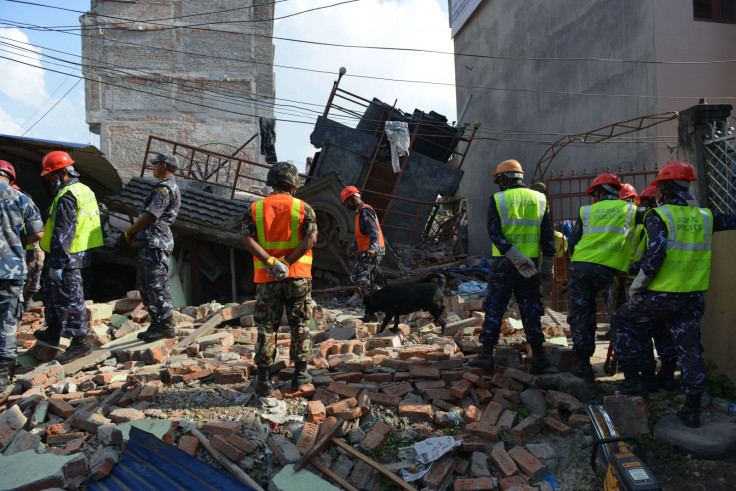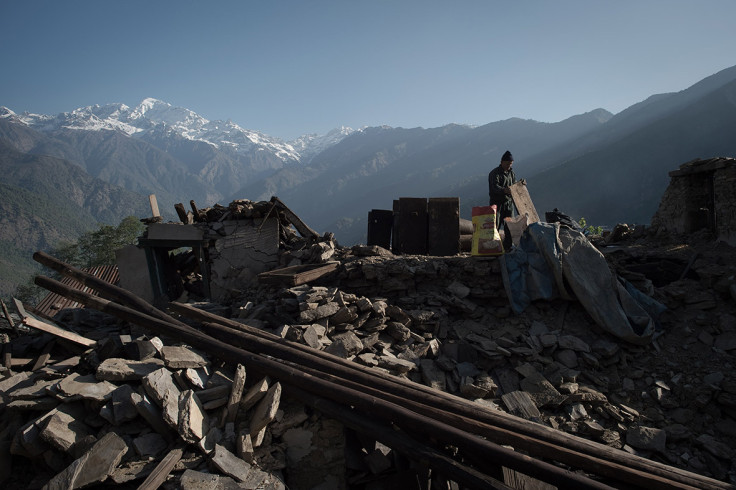Nepal earthquake one year on: Why was it so destructive and can another disaster be prevented?

Twelve months ago, a devastating earthquake struck the small Himalayan nation of Nepal, killing more than 8,000, injuring nearly 25,000, and pushing hundreds of thousands more into poverty. The Kathmandu Valley was hit hard by the 7.8 magnitude quake, which levelled homes, schools and hospitals and triggered a major avalanche on the slopes of Mount Everest.
It was the deadliest earthquake to hit Nepal in more than 80 years, and caused estimated economic losses of up to $10bn — nearly half of the country's GDP. Felt across a wide region stretching from the Indian capital Delhi to Dhaka in Bangladesh, the earthquake was followed by more than 300 aftershocks for months after the disaster, including one of magnitude 7.3 in May.
One year on, IBTimes UK looks back at why the earthquake was so destructive.
Geographical location
Nepal is one the one of the most seismically dangerous regions in the world due to its location at the meeting point of the Indian and Eurasian tectonic plates.
"Earthquakes along the collision zone between India and Asia are especially destructive because the Indian and Asian plates are moving rapidly towards each other and there is a great deal of friction between them," says Alex Densmore, a geography professor at Durham University. "So the relative movement is taken up in less-frequent but very large earthquakes, instead of in lots of smaller earthquakes."
Several significant and deadly earthquakes have hit the Nepal region over the last few centuries. In 1934, more than 10,000 people were killed when an 8.0 magnitude earthquake struck Nepal and Bihar, India.
Ian Main, a professor of seismology and rock physics at the University of Edinburgh, adds: "This earthquake occurred on the suture between these two major plates, a relatively shallow 'thrust' fault dipping at around 10 degrees to the horizontal towards the north, right under Nepal. This meant that all of the slip was relatively shallow, and a large amount of shaking reached the surface as horizontal shear motion, spread over a wide area, not just at the epicentre.
"Unless expressly built to withstand such motion, horizontal shear is the most destructive type of ground motion for most buildings and infrastructure."

Shallow depth of the earthquake
Deeper earthquakes tend to be less destructive because their energy dissipates before it reaches the Earth's surface. According to the US Geological Survey, the Nepal quake occurred at a depth of nine miles, contributing to its strength and resulting damage.
"Seismic waves are weakened in terms of amplitude as they travel through rock," says Gerald Roberts, a professor of earthquake geology at UCL. "Therefore, seismic waves from shallow earthquakes travel through less rock than those from deep earthquakes and so the seismic waves (physical up-down or side-to-side motions of rock) have relatively large amplitudes — this is more destructive."
The recent earthquake which struck Ecuador's central coast on 16 April also occurred at a relatively shallow depth of 11.9 miles. At least 600 people have been killed and hundreds more are still unaccounted for. Aftershocks are still ravaging the region.
Ground sediments
The ground beneath the Kathmandu Valley played a key role in the destruction caused by the quake. It is situated in a basin filled with around 2,000 feet of sediment from a former lake, which according to geologists, amplifies the ground motion during an earthquake like "jelly in a bowl".
"[The impact of the earthquake] was further exacerbated by the fact that most major settlements occur in local sedimentary basins that provide convenient flat ground for building, but can exaggerate the bedrock shaking significantly — much like jelly does in a bowl," says Main.

Roberts added the lake bed would amplify the shaking because the sediments are "relatively young, soft and compressible".
"Seismic waves amplify in such soft rocks. Also, seismic waves can bounce back off the harder rocks forming the margins of the lake basin. This reverberation and wave interaction further amplifies the shaking," he says.
A similar scenario has been witnessed in other devastating quakes. In 1985, Mexico City which is constructed on an ancient lake bed atop soft sediments, was hit by an 8.0 magnitude earthquake which killed around 10,000 and injured 30,000.
It is key to note the majority of deaths in Nepal occurred in rural, mountainous areas, which tended to be most affected by landslides because of the steep topography. "Landslides in those areas were triggered both by the earthquake and by the monsoon rains that followed," Densmore says. "This meant that the worst-affected areas were also the hardest to reach, and meant that there were major delays in getting people out and relief supplies into many of the high mountain valleys."
Poverty
An estimated 44% of the Nepalese population lives below the poverty line and the country's ability to cope with a natural disaster is hindered by the lack of social and economic infrastructure.
Not only is Kathmandu densely populated, but many of the buildings are made from cheap materials not designed to withstand strong earthquakes. A 2011 report from Nepal's Central Bureau of Statistics revealed that almost 42% of the country's houses had outer walls made of brick or stone masonry held together with mud mortar. Destruction was largely inevitable when the earthquake hit.

"The main avoidable control on the damage in most earthquakes is the vulnerability of the building stock, itself a function of the quality of the design and construction, as well as any efforts to regulate and enforce construction standards and appropriate planning of land use," says Main.
"In a relatively poor country such as Nepal, this can be hard to do, but there are some low-cost actions and measures that can be done to prepare for the inevitable. In the aftermath of this event many NGOs who were active in disaster relief are now focusing more, and earlier, on 'building back better' using this approach, working with local communities to develop their own resilience against future events."
Politics
Nepal transitioned to democracy after a decade-long civil war between Maoist rebels and the state ended in 2006, but political instability has remained a problem since. After the earthquake, international development analysts said in-fighting between Nepal's main political parties - the Communist Party of Nepal-Maoists, the Unified Marxist-Leninist, and Nepali Congress - led to disaster-preparedness taking a back seat.
"We were not prepared for a disaster of this scale," Interior Minister Bam Dev Gautam admitted several days after the earthquake. "We do not have enough resources and will need more time to reach out to everyone."
Roberts added that not enough is known about the location of faults under Nepal. "The positions of the faults are poorly known and so building planning does not exclude building close to active faults and steep slopes caused by active faults. These slopes are susceptible to landslide hazard which accounts for many deaths. The developing economy means buildings are often poorly constructed. Local populations are relatively poorly informed of the hazards where they live."
© Copyright IBTimes 2024. All rights reserved.







